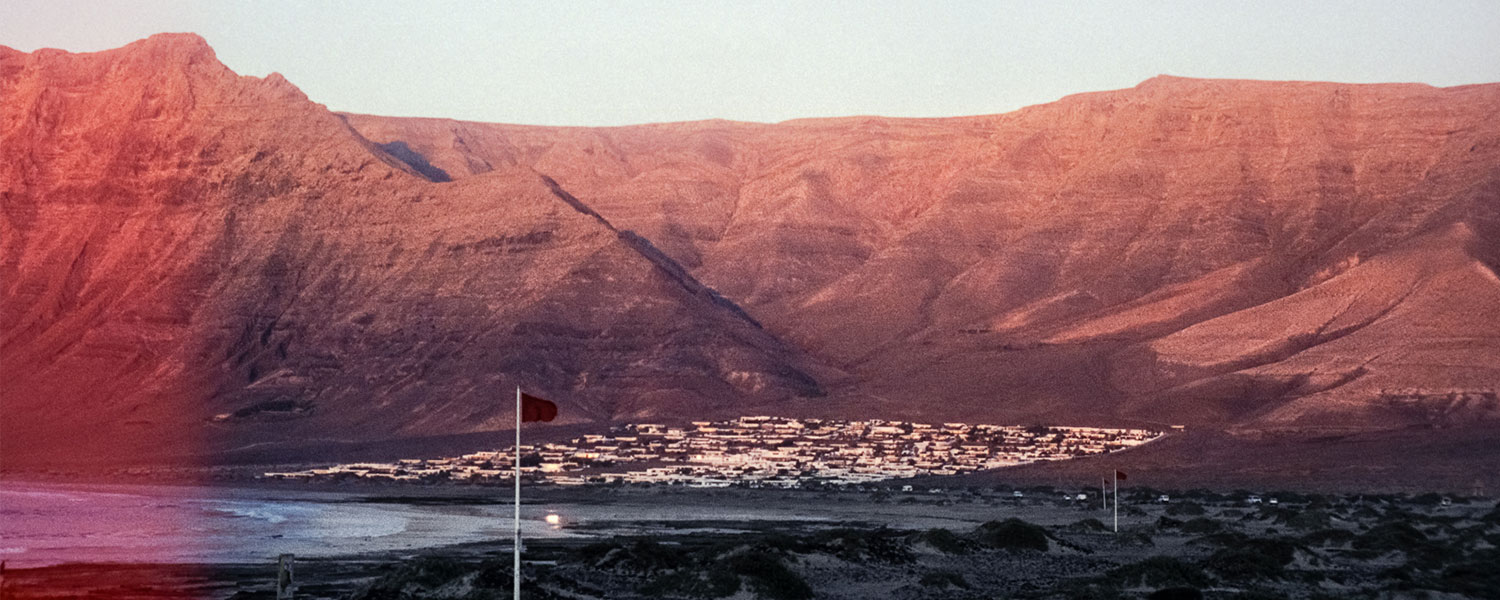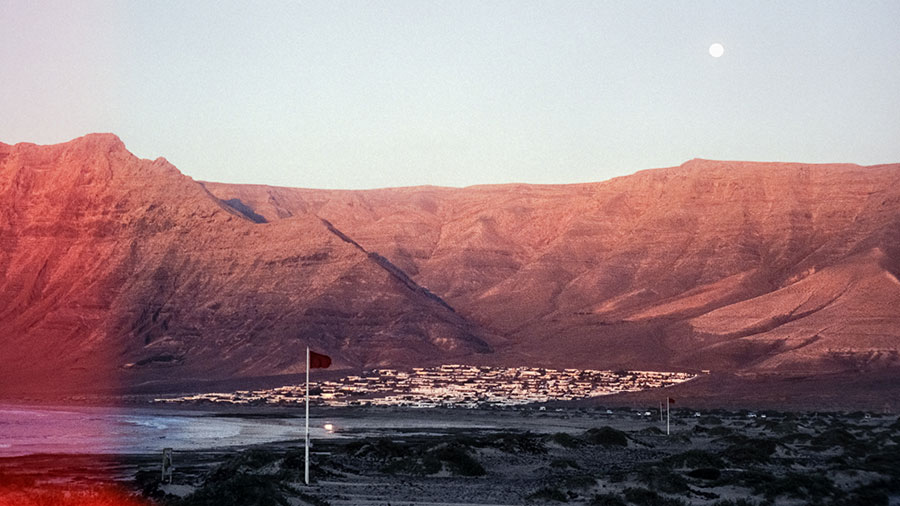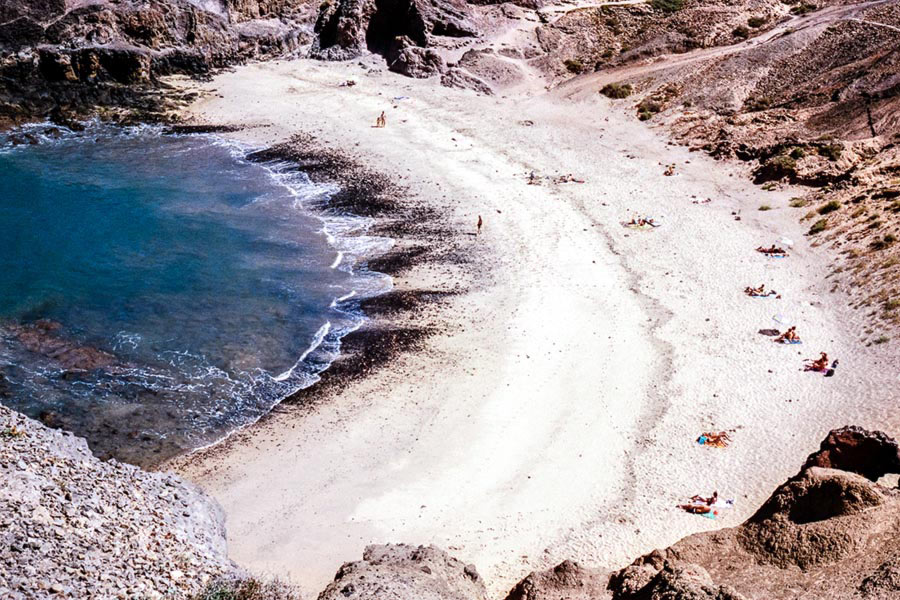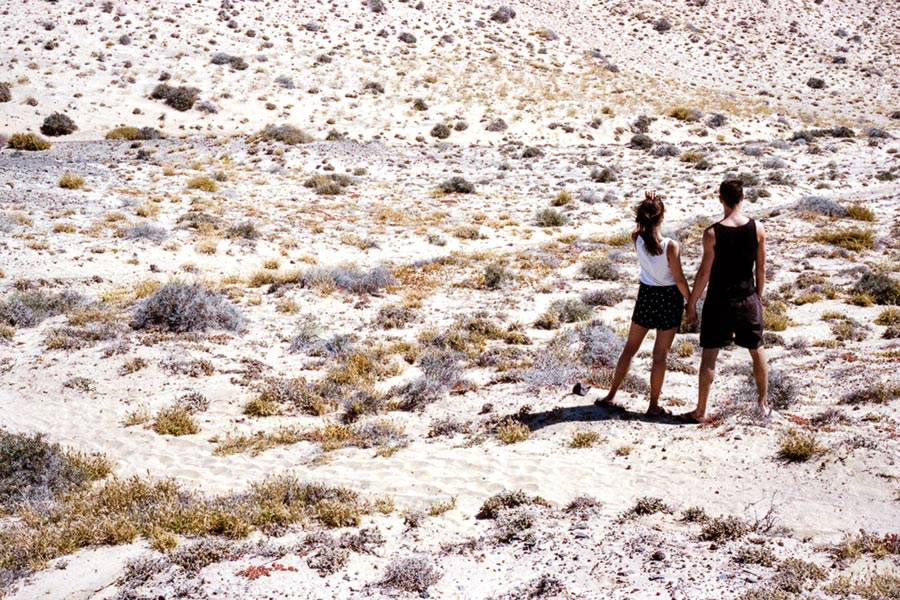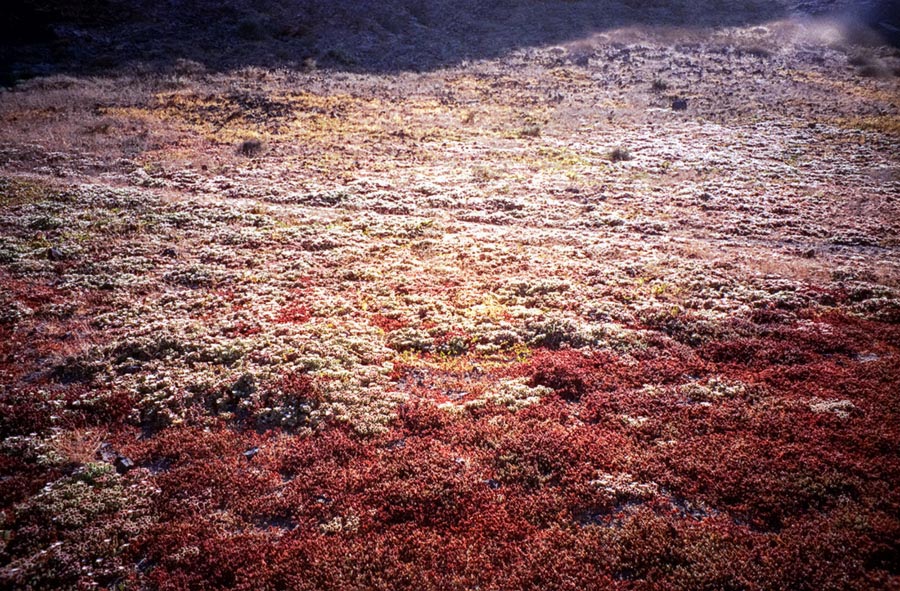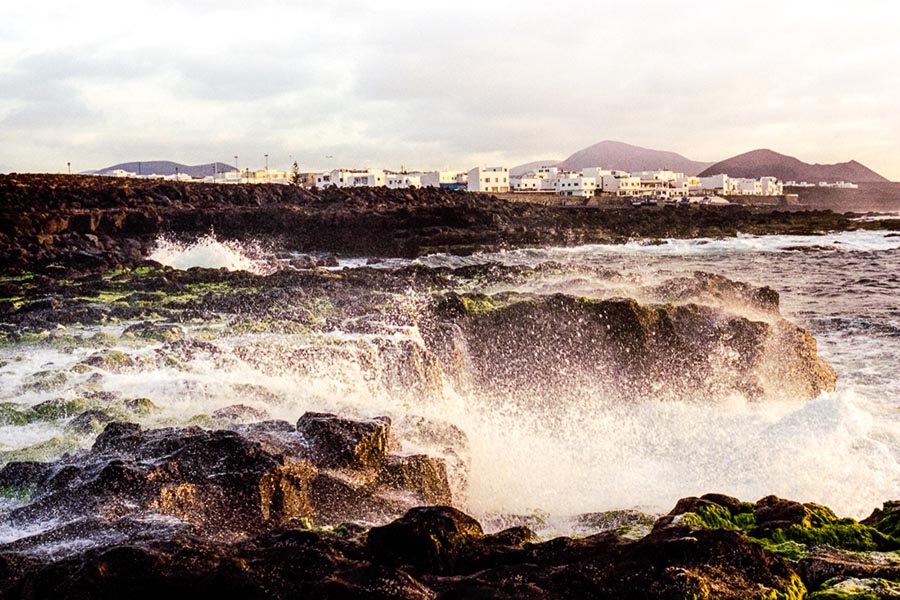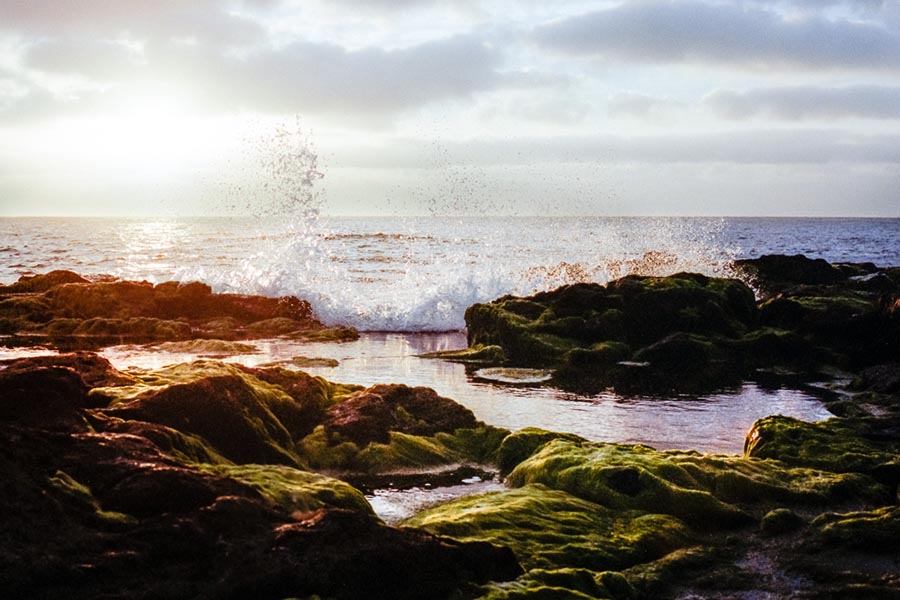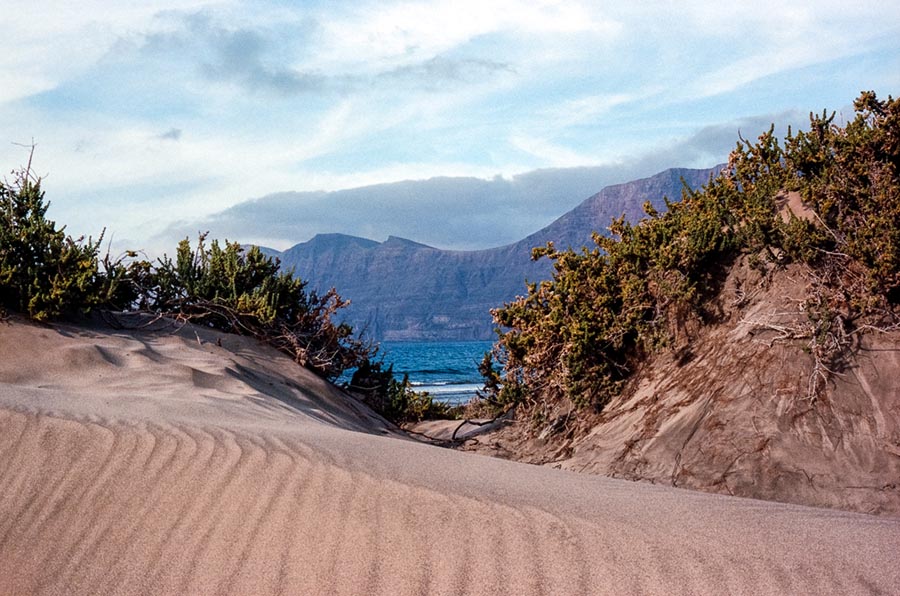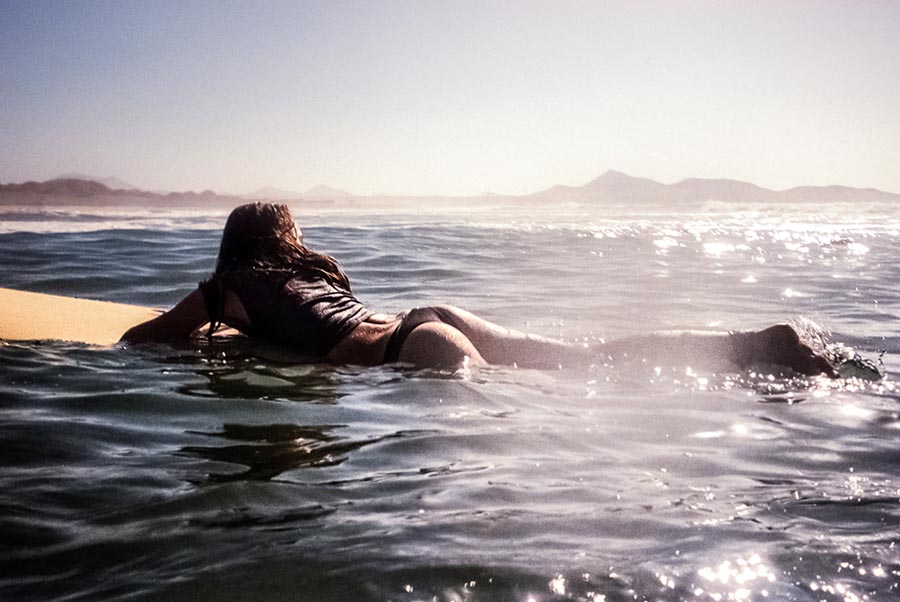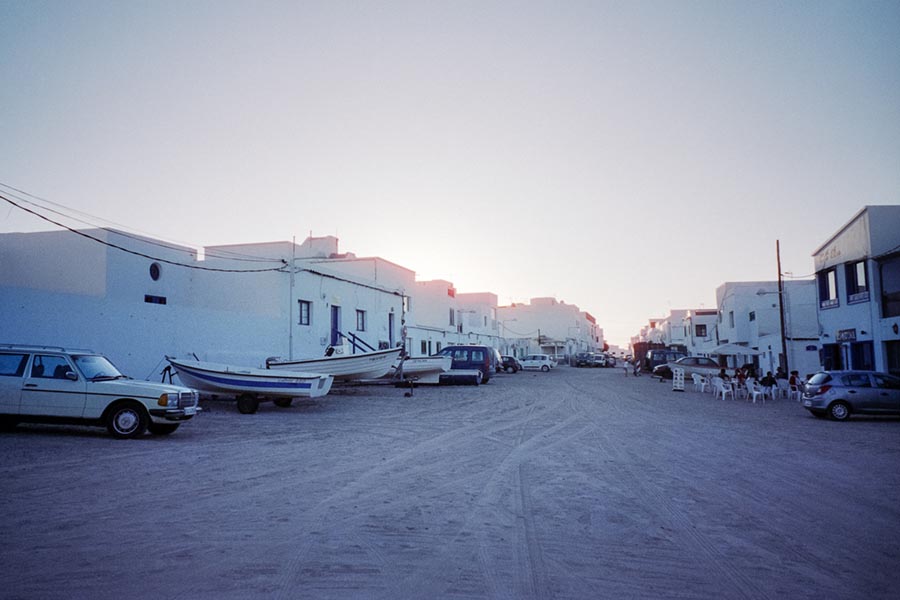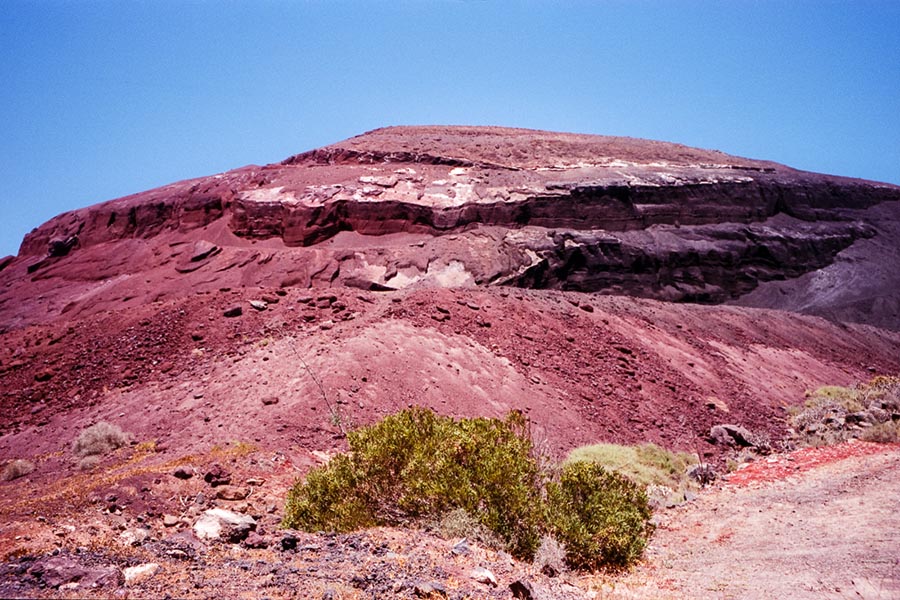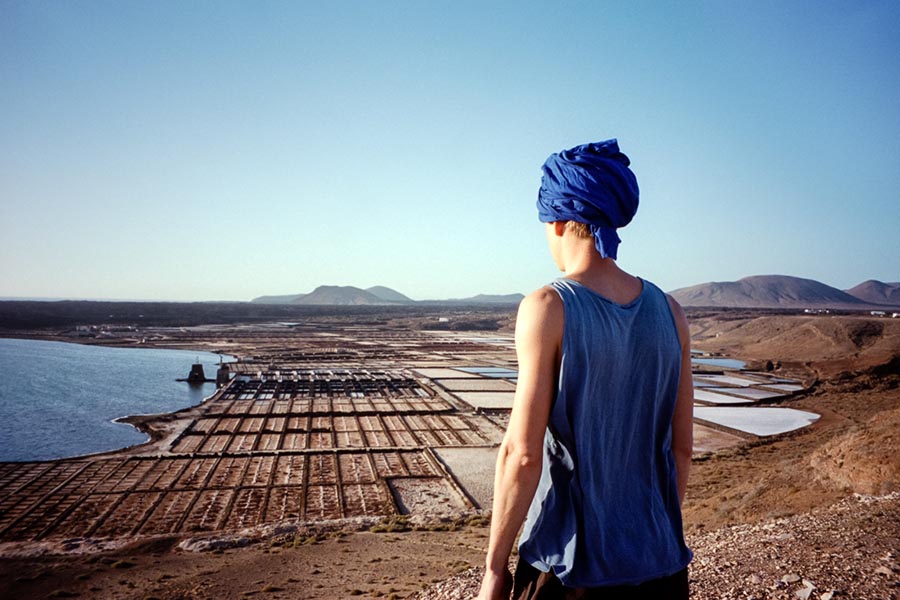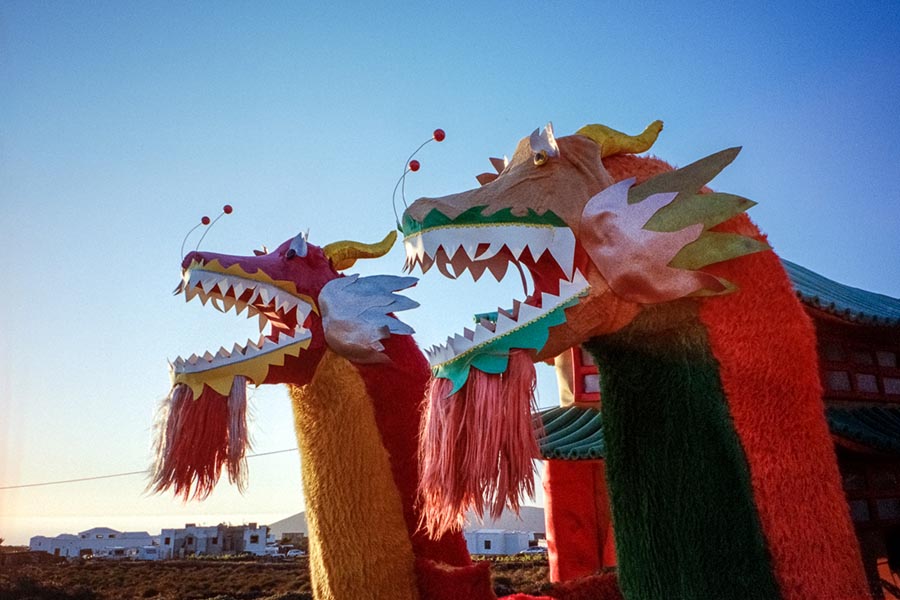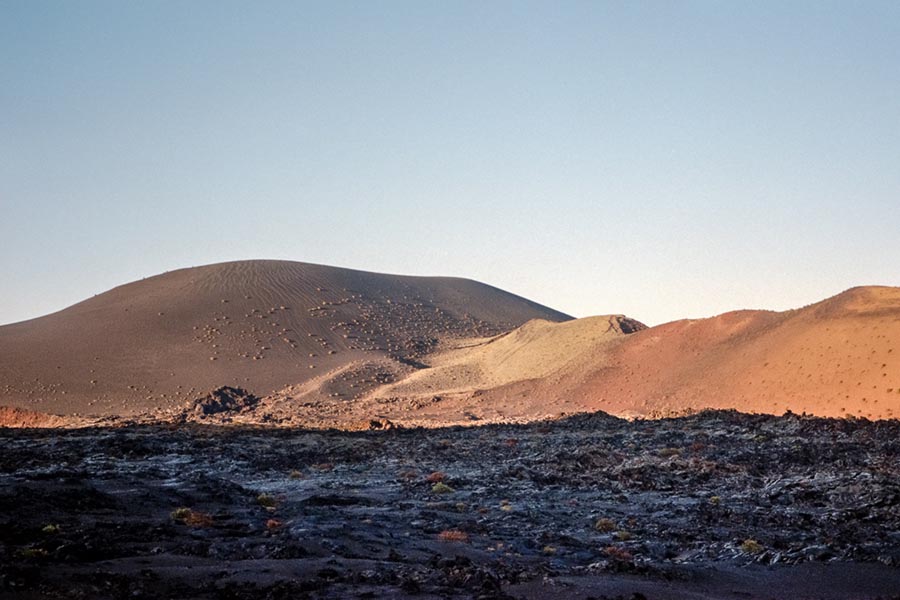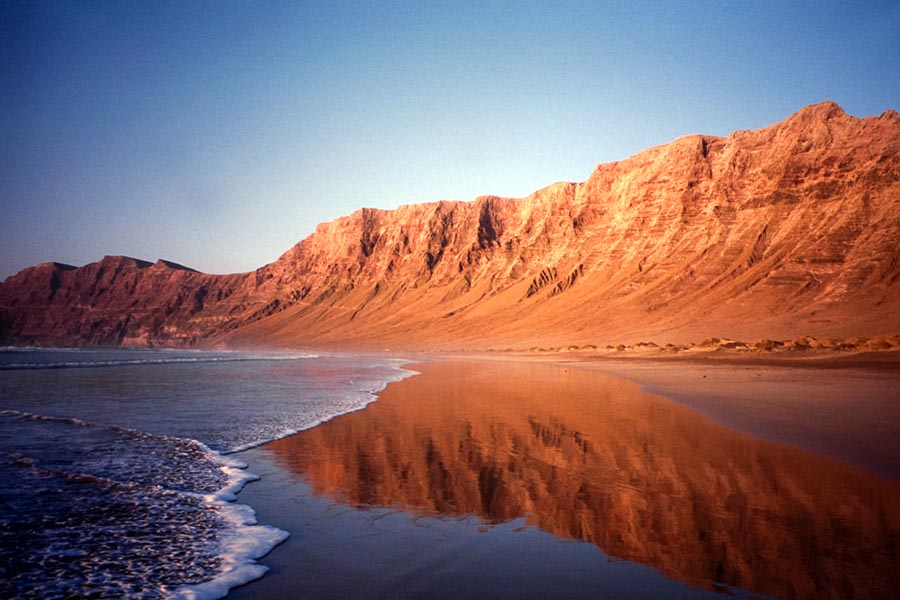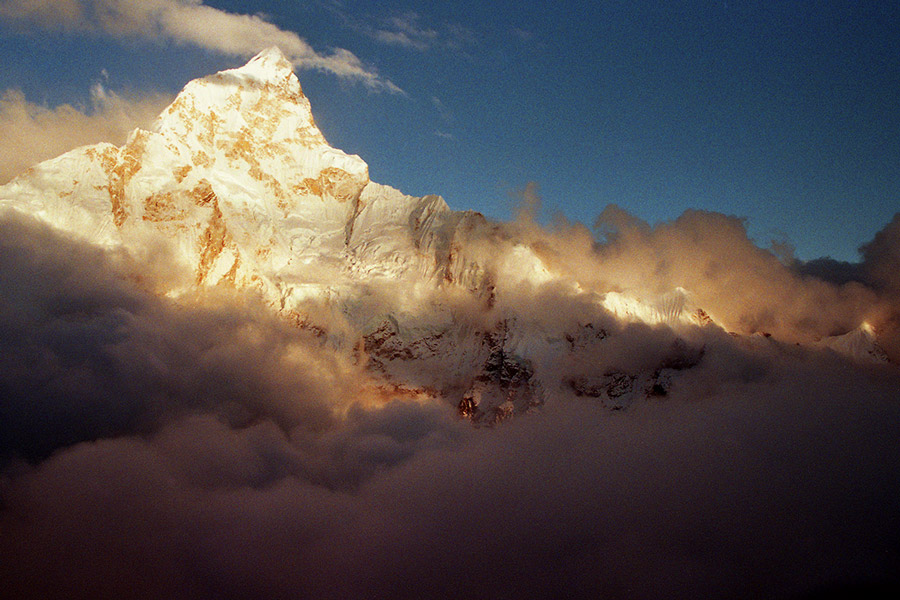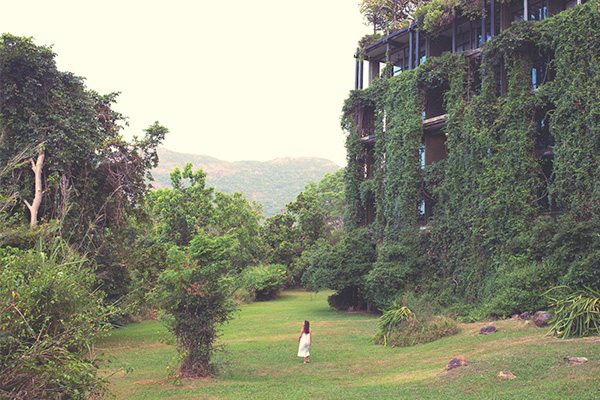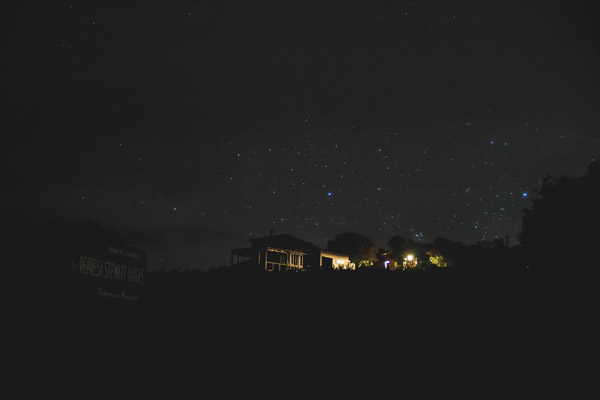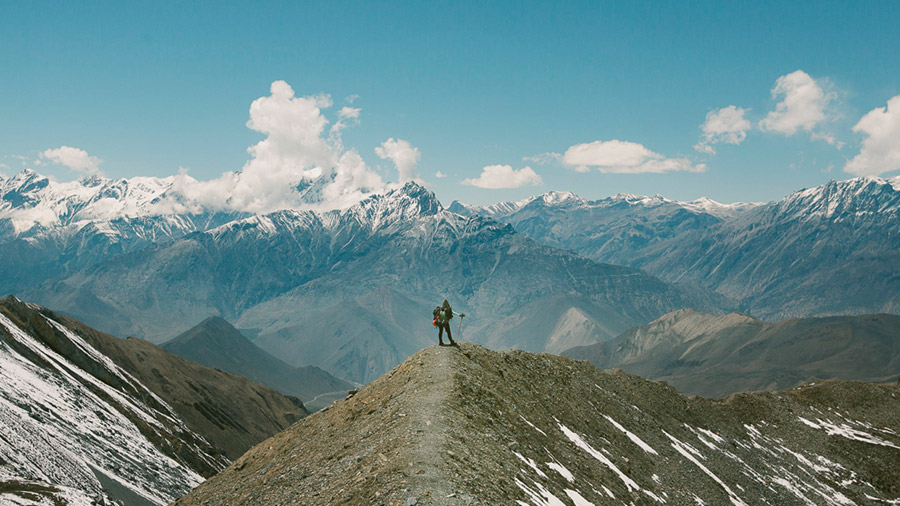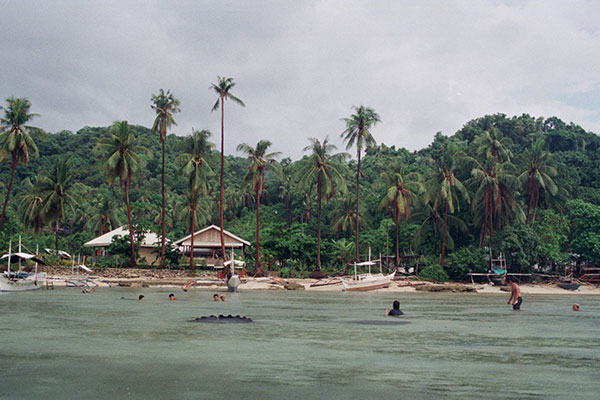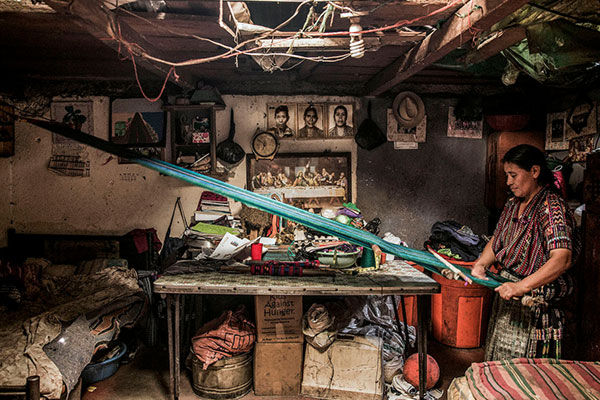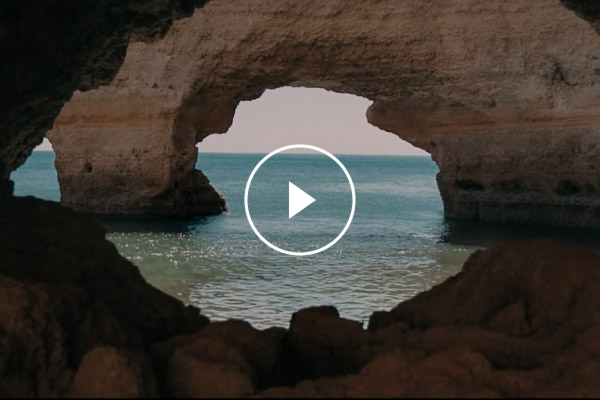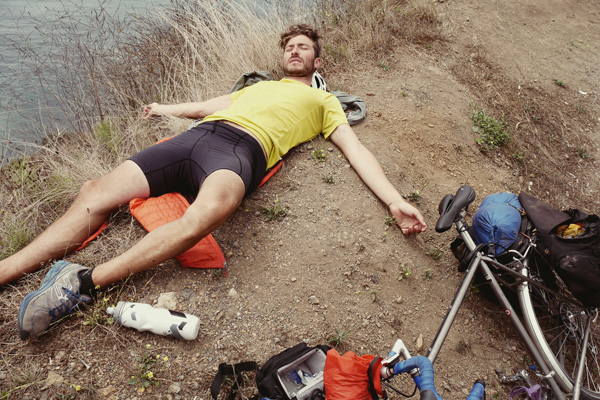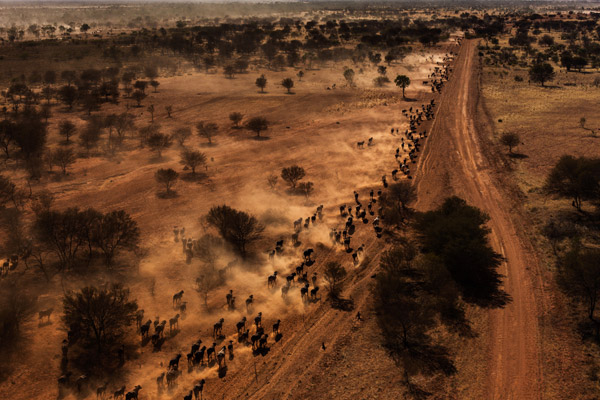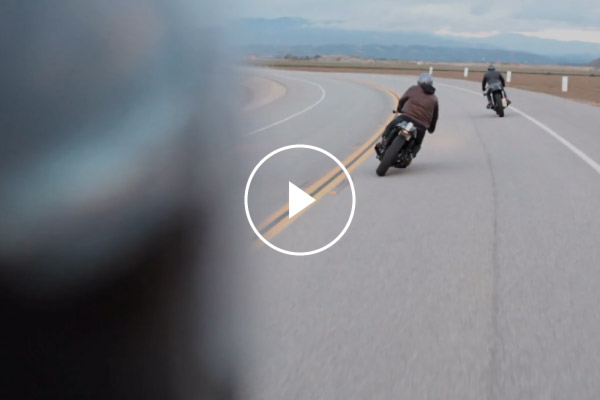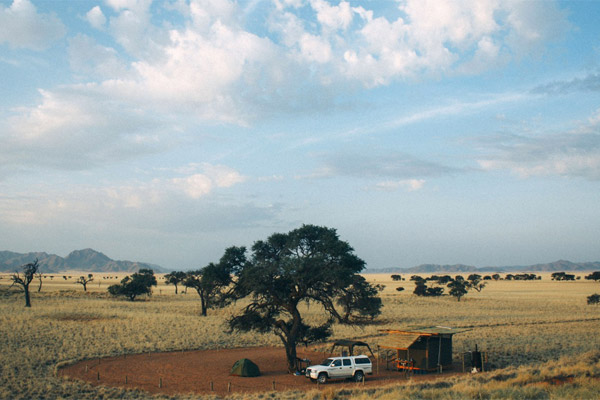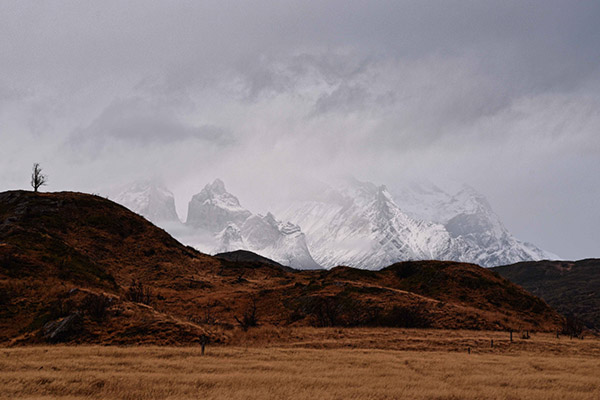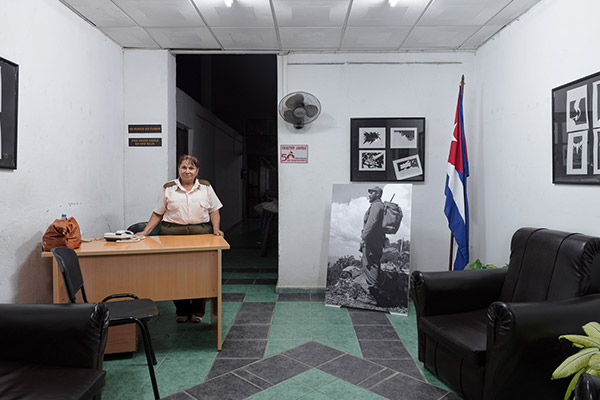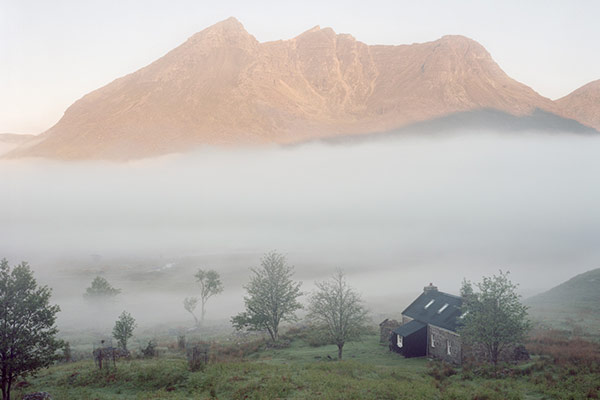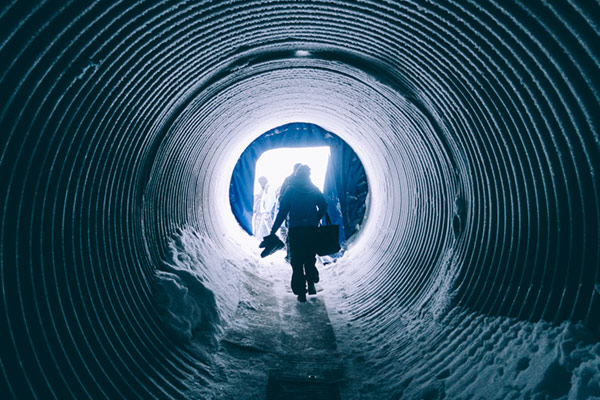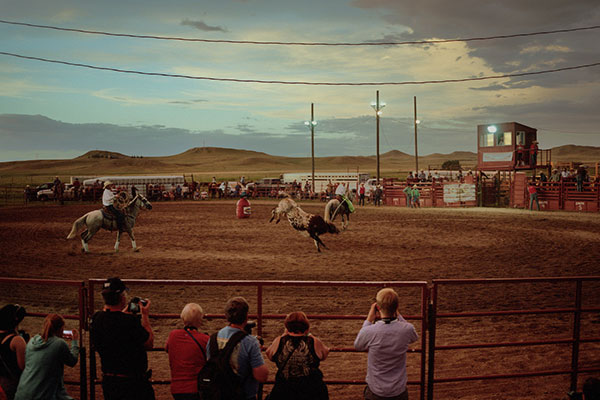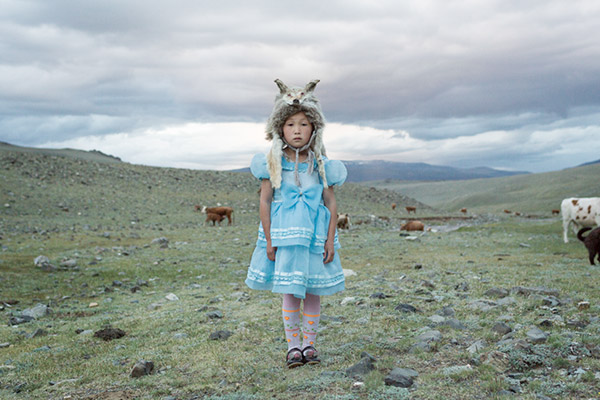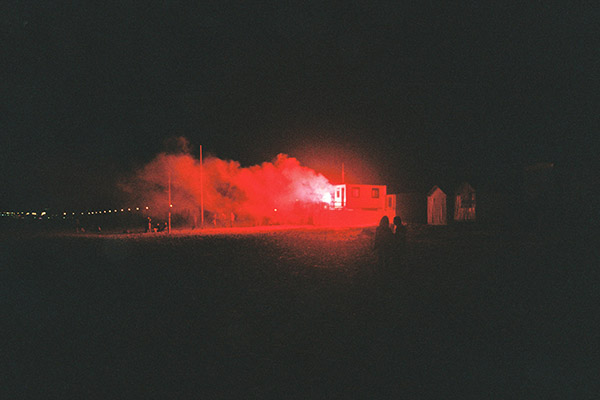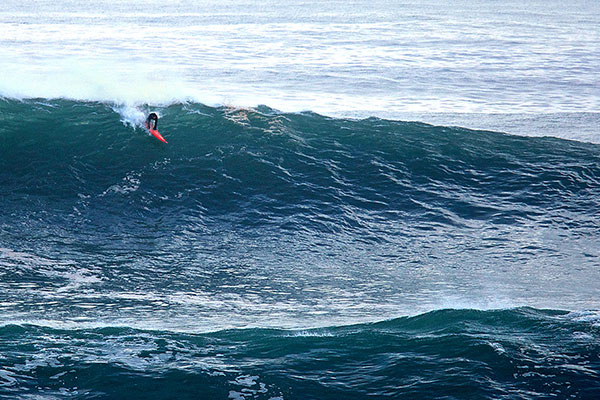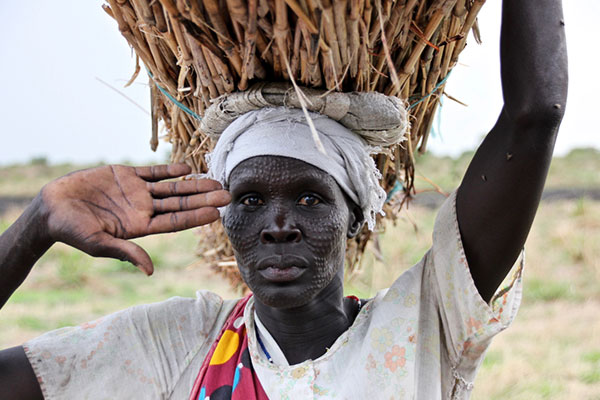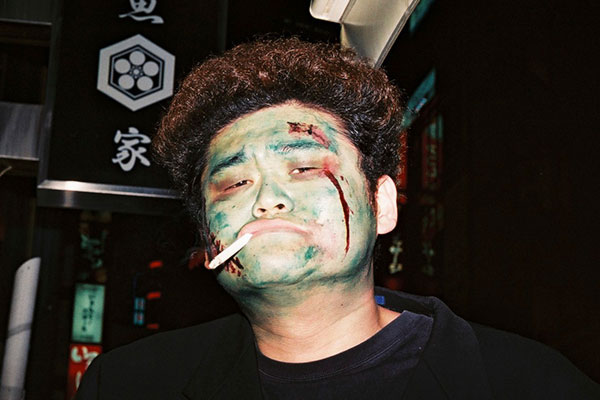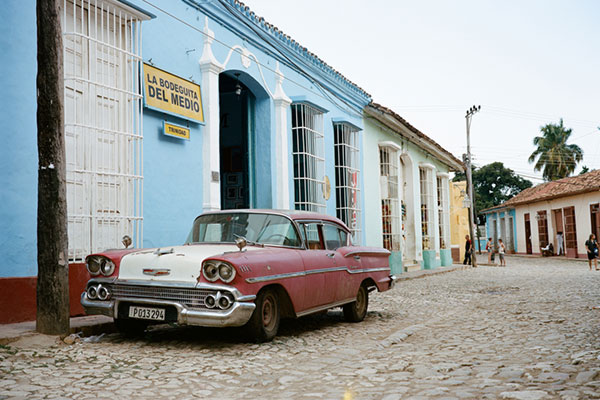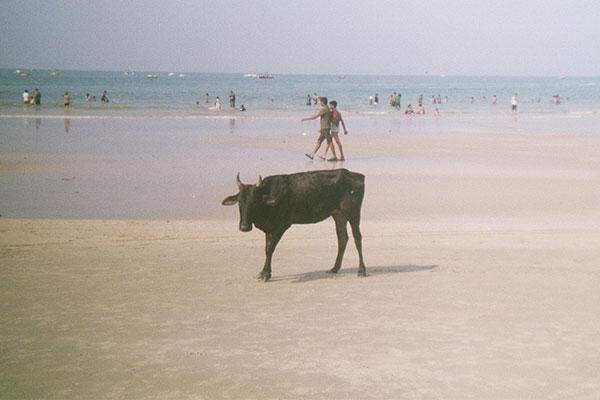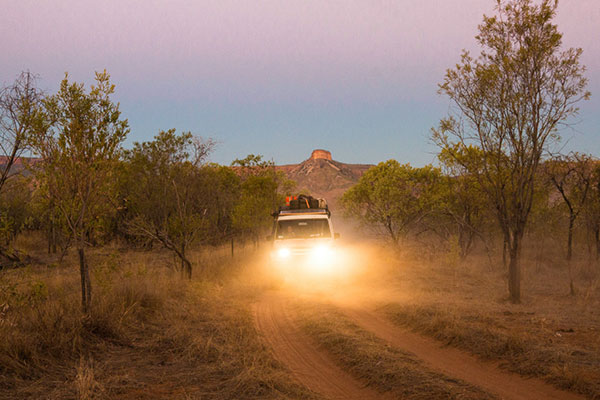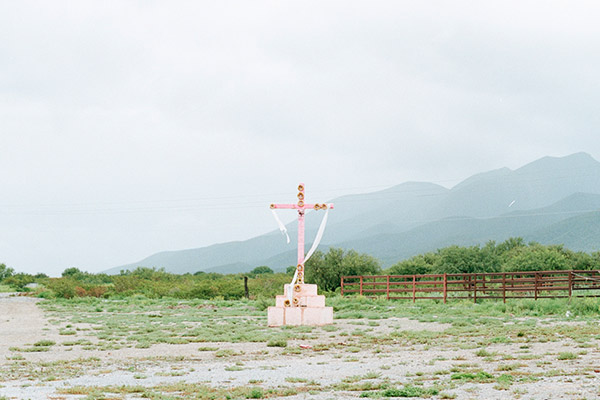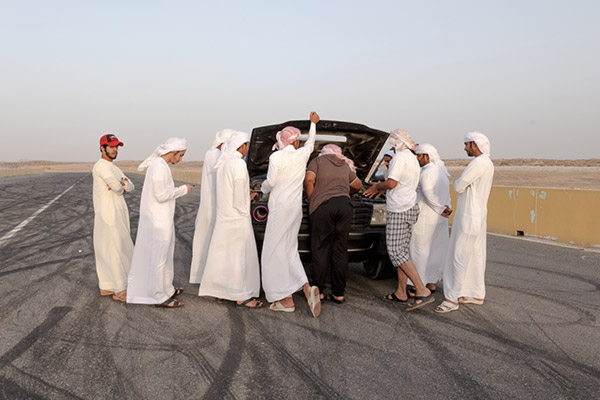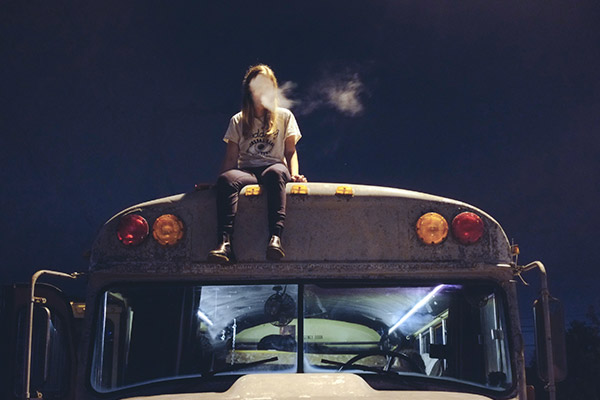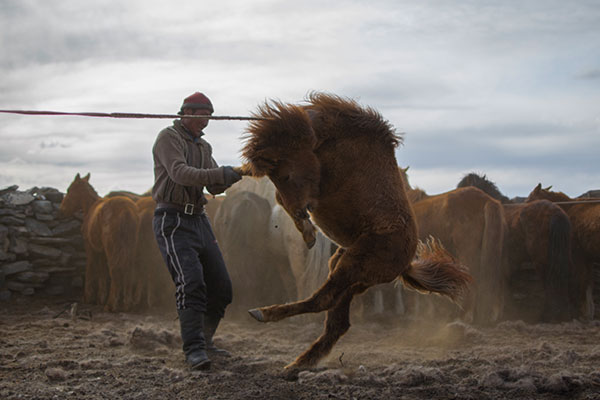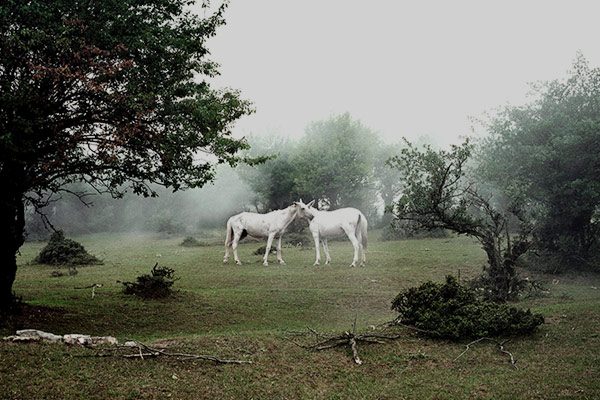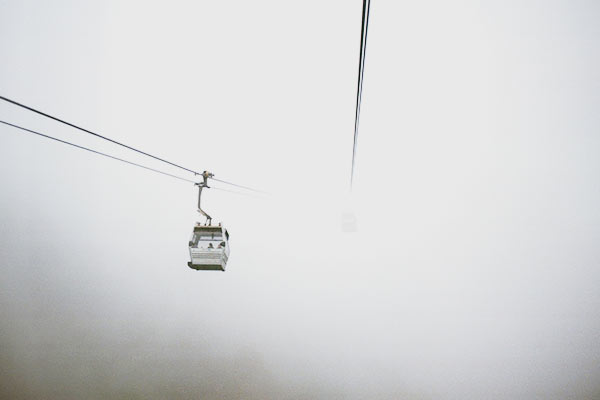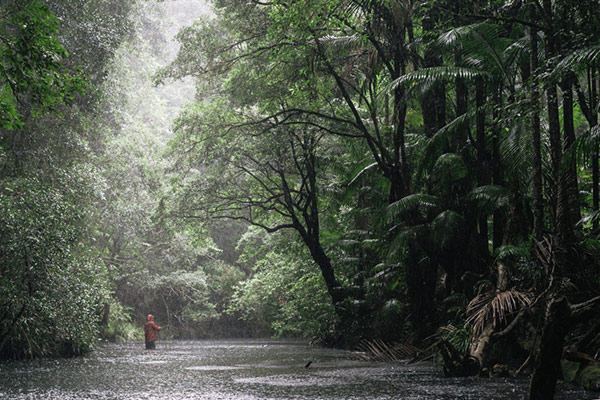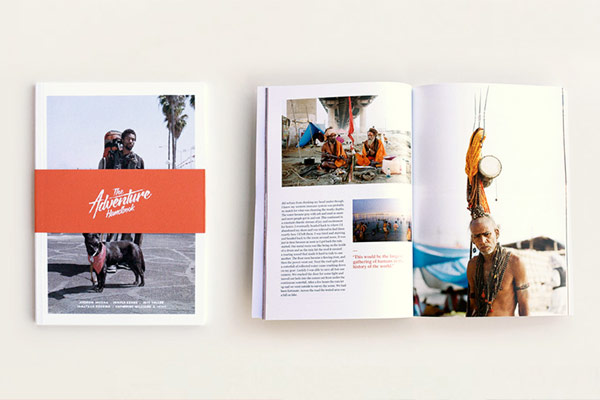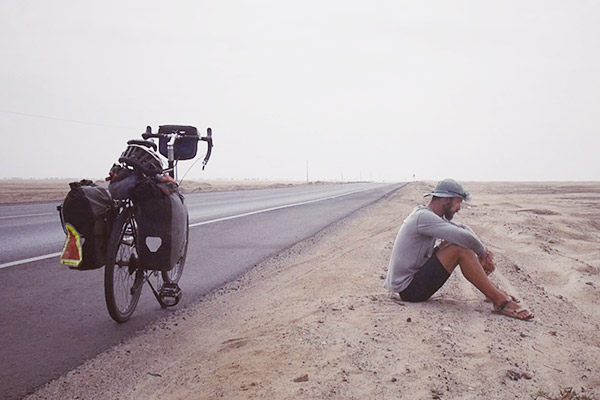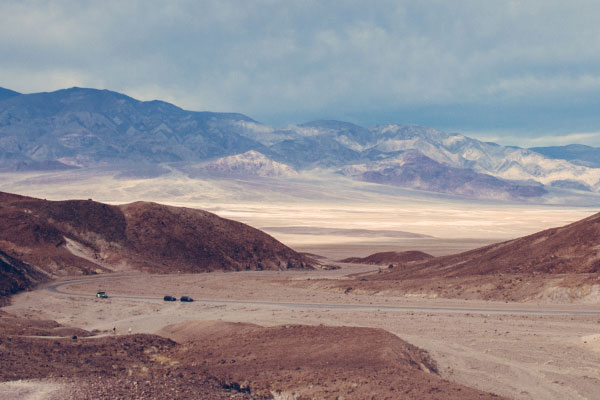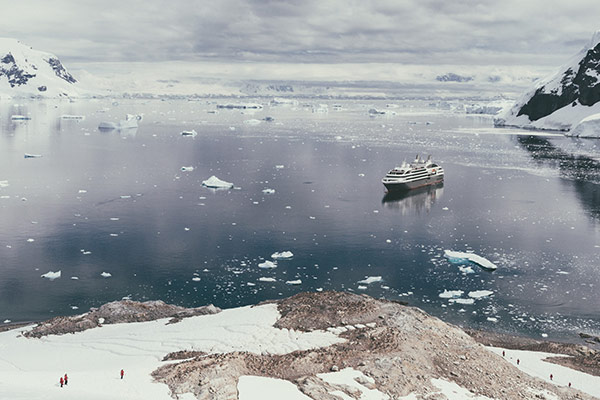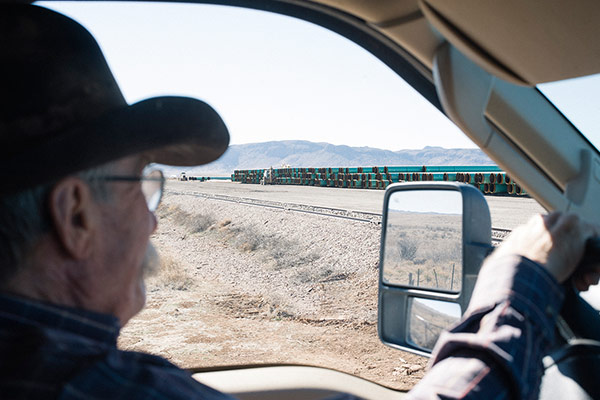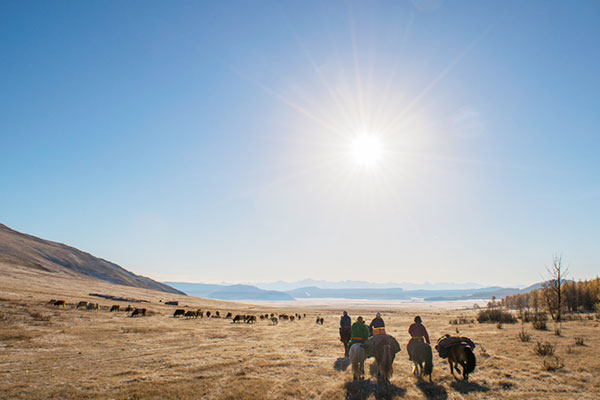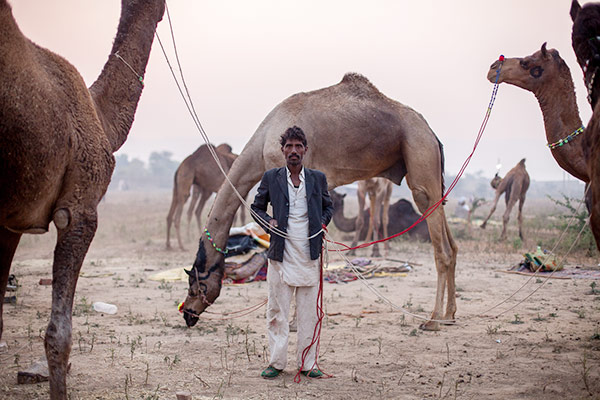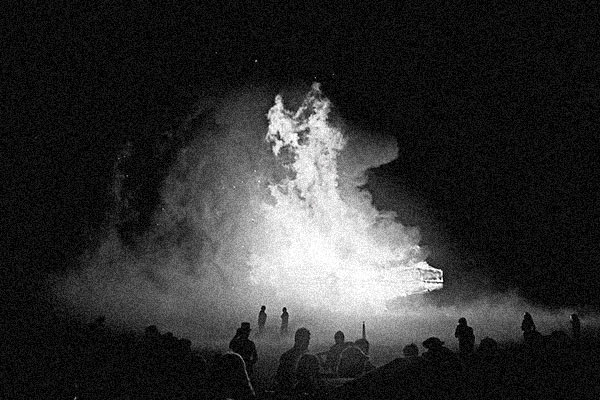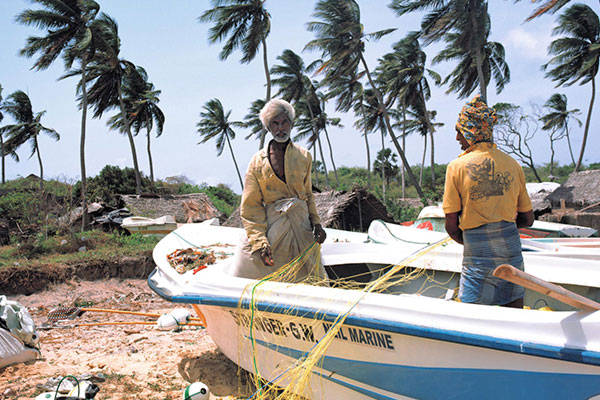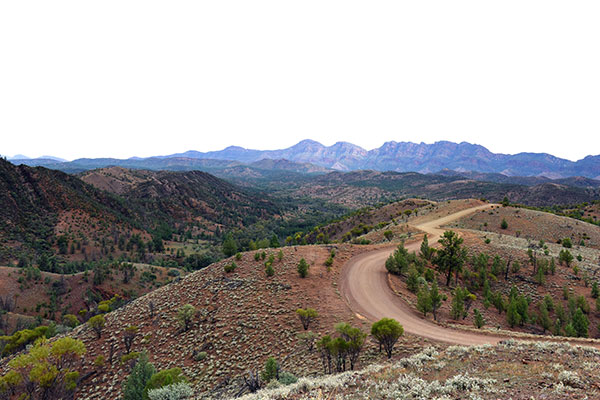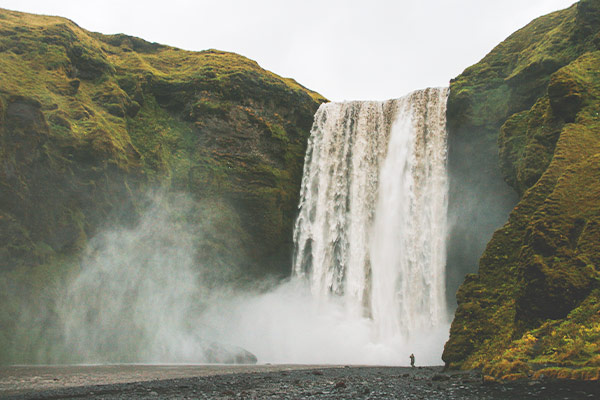Surfing the Canaries had never before been on the agenda. I’ve been only testing my body and my mind in that field for the last few years and the unspeakable fact that I enjoyed it so much hadn’t quite sunk in yet, and never influenced the choice of the next travel destination. So it caught me by surprise when trying to decide how and where to get away from rainy and busy springtime in Berlin – Lanzarote was the first and only spot that popped out in the full encyclopedia of ‘great locations’ in my mind.
Of the seven main islands of this remote Spanish archipelago, I’d heard most about Lanzarote. Thanks to Michel Houellebecq, the enfant terrible of French literature, and his soft pornographic, strangely scientific novella disguised as a travel book Lanzarote, I’d learned about its bizarre lunar landscapes. As much as I was impressed by the nine colour photographs of the island taken by Houellebecq himself, it seemed I decided to forget about the fact that he used barren landscape as a handy metaphor for the spiritually empty human condition. A more amusing point of reference is Pablo Almodovar’s romantic thriller Broken Embraces, that draws heavily on the dramatic landscapes of Lanzarote. In the film, Lena and Mateo (Lluis Hamar and Penelope Cruise) stay in a bungalow in La Caleta de Famara, a small coastal village located on the north shore of Lanzarote, away from the island’s more touristy areas in the south.
I knew a couple of friends who were regular visitors of this surfer’s paradise, so just a week after a quick catch up over Korean bibimbap, we found ourselves landing on this strange black volcanic land mass in the middle of Atlantic, too far away from Moroccan coast. In the first few hours we arranged a house, a car, skateboards, surfboards and some basic groceries, all in broken Spanish. The sky was an oversaturated blue, and the sun was much hotter than from where we came from. The other two weeks were spent living easy, mostly surfing in Famara and cruising around the island spontaneously.
The main attraction at Famara is for sure the beach. Despite being the longest beach on the island, it is also one of the most dangerous due to its strong swell and whirlpools, but provides perfect conditions for surfing, windsurfing or kite-surfing, depending on the wind. The working village of La Caleta de Famara is found at one end of the beach. Few restaurants, very basic grocery stores, some bars and surf shops are within the short walking distance. The road is not really a road, the pavement is full of sand brought by the wind and the only sound after sunset is the sound of the sea. Famara cliffs, or El Risco as they call it, are some 450m high, and dominate the other end of the beach. The beach and surrounding mountains reminded me of nothing I’ve seen before. No matter how many times over, they are magical and stunning to look at.
Speaking of magic, and I don’t wish to be superstitious, but you all probably have experienced places where you feel remarkably good, calm and centered, as if some strange energy is overwhelming you against your will. Each and every one of us have our own sweet spots, that blur our gaze as we daydream, just by the mention of it. As for Famara, I’m not quite sure what is it that makes the magic. It is hardly surprising that most of the people we met there came for a week of surfing and never got around to leaving. Whether they become surf instructors, medical practitioners, bestseller writers or airplane pilots and stewardesses stationed there where they can surf between flights, their existence becomes excessively influenced by the search for meaning, purpose, beauty and endless carefree activities to learn and explore.
After a few days I couldn’t stop thinking about how ridiculous was the idea of a two week only vacation. Although my inner urge to take photos takes me to places where no regular sunbathing holidaymaker usually goes, we did do some random sightseeing. But I’m not going to tell you about these places in great detail. I’m definitely not going to get emotional about how unearthly it felt walking on the grounds of Timanfaya, observing the results of many earthquakes that drastically changed the island and literally buried the quarter of it with lava and ash. I’m not going to cry out loud about not hopping over to La Graciosa, a tiny island just two kilometers north of El Rio and camping under a clear night sky. Or describe the beauty of many beaches like Playa Blanca, Playa de Papagayo, La Garita, Playa Quemada or the bizarre-shaped cliffs where wild waves crash on to the shore towards El Golfo. I won’t brag about how every time we went places we pulled our car over when driving back to Famara to visit wineries in the Valley of La Geria, with perfect black circular hollows each holding and protecting a single green vine, that look much more like an art installation than agricultural land. Or the perfect villages of Los Valles, Femes, Taiche or the famous La Haria.
Hidden in a lush valley and surrounded by palm trees blowing in the breeze, this was where the surrealist architect, artist and environmentalist Cesar Manrique has lived for the last few years of his life. He’s the man responsible for the simple yet elegantly artistic aesthetic of the whole island, provoked by his desire ‘to live with the lava’ and not against it. No wonder the locals say he has ‘made’ Lanzarote. His house, now a foundation, was built around a fig tree and into the boulders in a lava field, and his wind sculptures, that he calls Wind Toys can be seen all around the island, on roundabouts, main streets, the airport… His most notorious legacy was convincing the government and the people to respect the style of traditional architecture – most houses are white, high-rise buildings are prohibited and there are no advertising billboards on the highways or landscape. Coming from an island myself, where cheap hotels, supermarkets, ugly housing facades, overuse of plastic and aluminum and all other non-sustainable tricks and treats of modern tourism are slowly creeping in, I found Manrique’s work not only inspiring, but one to copy and paste without a single shred of embarrassment in doing so.
The last day of our visit was something quite extraordinary. Already in the morning, the record temperature hit 42°C, and Sirocco – the world’s warmest ever fan – blew from Sahara bringing the desert air to Famara beach. It was almost impossible to leave the water, even more to pack our bags. We stopped for a last ‘boccadillo’, a custom made sandwich that for us meant a ciabatta bread full of prosciutto, pecorino, slices of tomato, olive oil and spices carefully assembled by a lady in a local grocery shop that knew the value of taking the time to make it regardless of the longest queue… On the flight back we couldn’t resist talking long into the night about beautiful connections that were made, landscapes explored and our next visit.
Words and images by Katja Kremenić
Receive a postcard from us sign up


